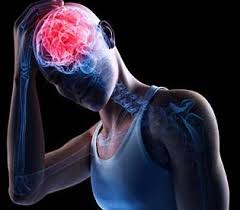I hope that all of you are doing well, staying active, and prepping for Christmas next week. I can't believe we're so close to Christmas and the end of another year, It seems to just go by quicker and quicker every year.
It's been a little while since my last post and I apologize for that, things have been a little crazy since the release of the book... I also recently have transitioned from part time in the PT clinic and part time Adaptive Fitness Training to just full time Adaptive Fitness Training. While I do love the Physical Therapy profession, the need is just too great for Adaptive Fitness Trainers, so I have dedicated myself to providing my services as an Adaptive Fitness Trainer full time and to reach as many people as possible.
It's been really cool to be able to help so many people locally and out of state, this has been the reason for my recent hiatus in my posting.
I come back though, with a great post! I think you all will benefit from this post and really think it will make you think about your fitness activity a bit differently after reading it. If you like it please comment below, Enjoy!
Why YOU should understand what Neuroplasticity is and how it can help you
Let's get past the terminology for a second, we'll come back to that.... the majority of my post stroke and spinal cord injury clients are usually coming to me because they want to walk better, get stronger, or improve their function.
They want to continue the benefits of their PT program, just one problem......
Physical Therapy is complete, and they have been discharged!
Some people will just wait until they are able to resume PT, others will do some exercise here and there, and some will hire a trainer.
Hiring a trainer is great, but...
Going to a trainer who does not have a background working with people who have disabilities is like driving in circles, they mean well but ultimately cannot design a program to benefit you to improve function.
They most likely will focus on things that you can do very well, while neglecting the more challenging activities that you cannot do or are too weak to perform efficiently.
This is where an Adaptive Fitness Trainer shines, as an Adaptive Fitness Trainer we are looking to maximize everything you;ve got. Communicating closely with your medical team (PT, OT, MD) We will do whatever we can in the safest manner possible to maximize your strength and improve your function by attacking your weakest points, attacking your nervous system, getting you to try to use as many muscles all at once as much as you can and doing this over and over and over again.
Now....lets go back to the term: Neuroplasticity. What is Neuroplasticity and how can it help you....
Check out the following per www.Medicine.Net
Neuroplasticity: The brain's ability to reorganize itself by forming new neural connections throughout life. Neuroplasticity allows the neurons (nerve cells) in the brain to compensate for injury and disease and to adjust their activities in response to new situations or to changes in their environment.
Brain reorganization takes place by mechanisms such as "axonal sprouting" in which undamaged axons grow new nerve endings to reconnect neurons whose links were injured or severed. Undamaged axons can also sprout nerve endings and connect with other undamaged nerve cells, forming new neural pathways to accomplish a needed function.
For example, if one hemisphere of the brain is damaged, the intact hemisphere may take over some of its functions. The brain compensates for damage in effect by reorganizing and forming new connections between intact neurons. In order to reconnect, the neurons need to be stimulated through activity.
"Forming new neural pathways to accomplish a needed function" This is done through repeated compound activities that require communication throughout your nervous system to many muscles all in a preferred weightbearing position.
Research proved that locomotor assisted walking over a period of time improved neuroplasticity in patients, as well as regular consistent walking for periods of 20 minutes a day. See here and here.
The point of this post is to stress to you that consistent activity will yield positive results. If you can safely walk the hallways with your walker or cane, then bring a stopwatch and do it for twenty minutes or more daily (with rest breaks as needed), if you have access to an Adaptive Fitness Trainer, then be bold, be fearless, have your trainer challenge you beyond what you think you can do. If you don't have a trainer do whatever exercise or movement or activity that you can safely attempt to do on your own and be consistent and do it often.
If improving Neuroplasticity is done by consistent repeated movements, than just sitting at home isn't going to help. Start moving!
If you don't know where to start check out my book disabilityfitnesshandbook.com for some info to get you started on an adapted fitness program, talk to your therapist, or contact an Adaptive Fitness Trainer in your area.
Feel free to contact me if you have any questions!
As always......
Keep Pushing, Never Give Up!
-Devon























